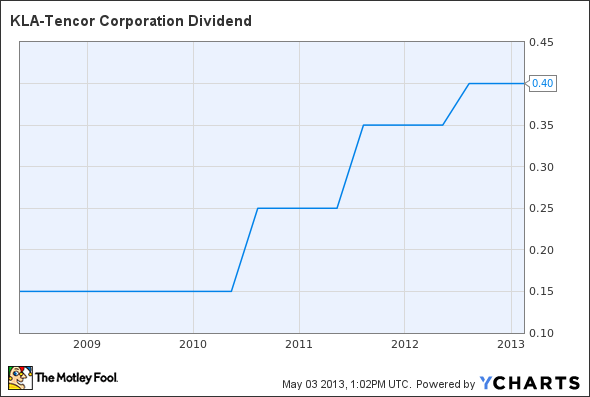In the following video, we hear from Fedele Bauccio, founder and CEO of Bon Appetit Management. His company has built its reputation on locally sourced, seasonal, healthy foods and is actively involved in sustainability issues affecting every aspect of the food industry.
Bauccio's company has revolutionized the food-service industry. He recalls that it all began with a passion for food that was born as he watched his mother grow her own food and prepare authentic Italian meals for the family.
A transcript follows the video.
The Motley Fool's chief investment officer has selected his No. 1 stock for the next year. Find out which stock it is in the brand-new free report: "The Motley Fool's Top Stock for 2013." Just click here to access the report and find out the name of this under-the-radar company.
Isaac Pino: Well, Fedele, we are ecstatic to have you here today. I was going to give a brief introduction to the crowd to give them some perspective on your career, your experience, and your company today.
Fedele began his career in food service as a dishwasher in 1960 with Saga Corporation's education division, while a student at the University of Portland, and 27 years later he set out on his own to revolutionize the institutional food service industry.
Fedele founded Bon Appetit Management Company in 1987, and for the first time, real executive chefs were put in charge of the kitchens of colleges, universities, corporations, and cultural centers.
In 1999, Fedele and his team raised the bar for on-site food service by making a commitment to socially responsible food sourcing, starting with the launch of its "Farm to Fork" program. Since then, Bon Appetit has been addressing sustainability issues across the board, taking these challenges head-on and embracing small, owner-operated farms, sustainable seafood, turkey, and chicken raised without antibiotics, and a "low-carbon diet."
The first program to make the connection between food and climate change, Fedele's work and Bon Appetit have been honored by many organizations for tackling sustainability issues in the food industry, and today Fedele has flown over from the company headquarters in Palo Alto to Washington, D.C.
Thanks for being here, Fedele.
Fedele Bauccio: Good morning, everybody. I'm happy to be here.
Pino: We have a little bit of California weather today, just for you.
Bauccio: Yeah, it's not so bad. Yeah.
Pino: I wanted to get this started by reaching back into your background. You washed dishes, you worked in the food-service industry. It seems like you always had a knack for food, or perhaps a passion. Is that the case? Did you always have an interest in this line of work?
Bauccio: I did. I guess, being Italian, growing up with an Italian mother that loved cooking, and I was by her side a lot in the kitchen, I had this affection for food.
I was lucky, because she grew tomatoes and basil and all kinds of stuff in her backyard, so we were able to eat really well. When I got to college, Mom and Dad didn't have a lot of money, so they said, "You'd better get a job," so I started washing dishes.
About three months later, the chef in the kitchen at that time, or the cook, said, "Why don't you come in after class and start cutting vegetables for me, and get off the dish machine?" That was the start of it.
I started to put my hands in food while I was going to the university, and I felt that this was something I wanted to do. I wasn't quite sure what it was going to be, but I always had this passion and love for food.




 J.C. Penney J.C. Penney's (JCP) quest to rebound from the disastrous reign of ousted CEO Ron Johnson continued today when it apologized to its disaffected customers in a new ad.
J.C. Penney J.C. Penney's (JCP) quest to rebound from the disastrous reign of ousted CEO Ron Johnson continued today when it apologized to its disaffected customers in a new ad.
 Emerging markets feature imperfect protection for private property, government interference in markets and the affairs of companies, low liquidity, low transparency and volatile economies. Frontier markets aren't even up to the emerging stage; they're pre-emerging.
Emerging markets feature imperfect protection for private property, government interference in markets and the affairs of companies, low liquidity, low transparency and volatile economies. Frontier markets aren't even up to the emerging stage; they're pre-emerging.



 Alamy Over the last several years, the news about Social Security's long-term health has gotten progressively worse. With nearly every passing year, the Social Security Administration's annual Trustees' Report has pulled forward the date when the Social Security Trust Funds are expected to run out of cash.
Alamy Over the last several years, the news about Social Security's long-term health has gotten progressively worse. With nearly every passing year, the Social Security Administration's annual Trustees' Report has pulled forward the date when the Social Security Trust Funds are expected to run out of cash.